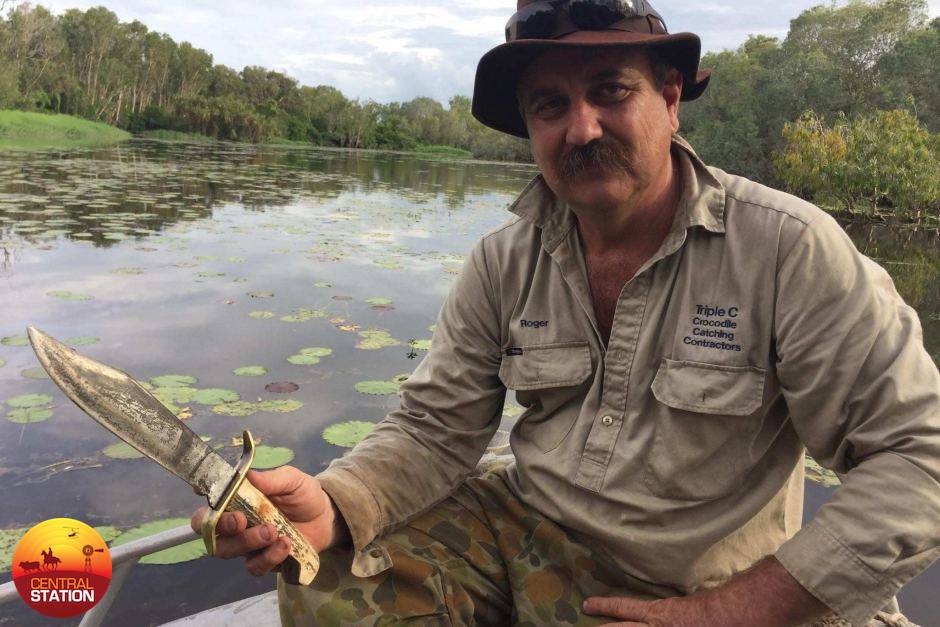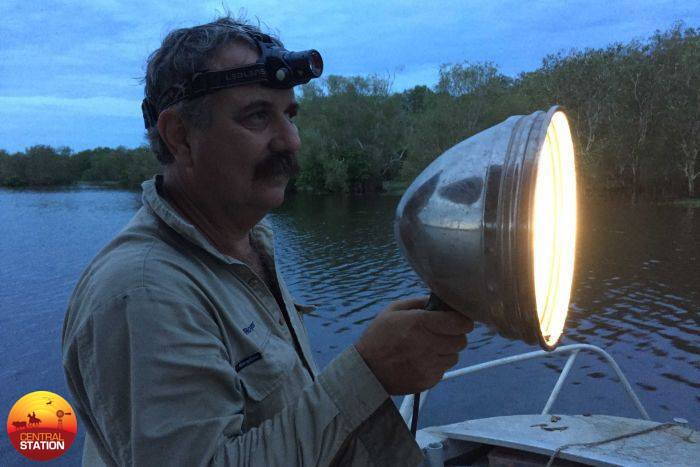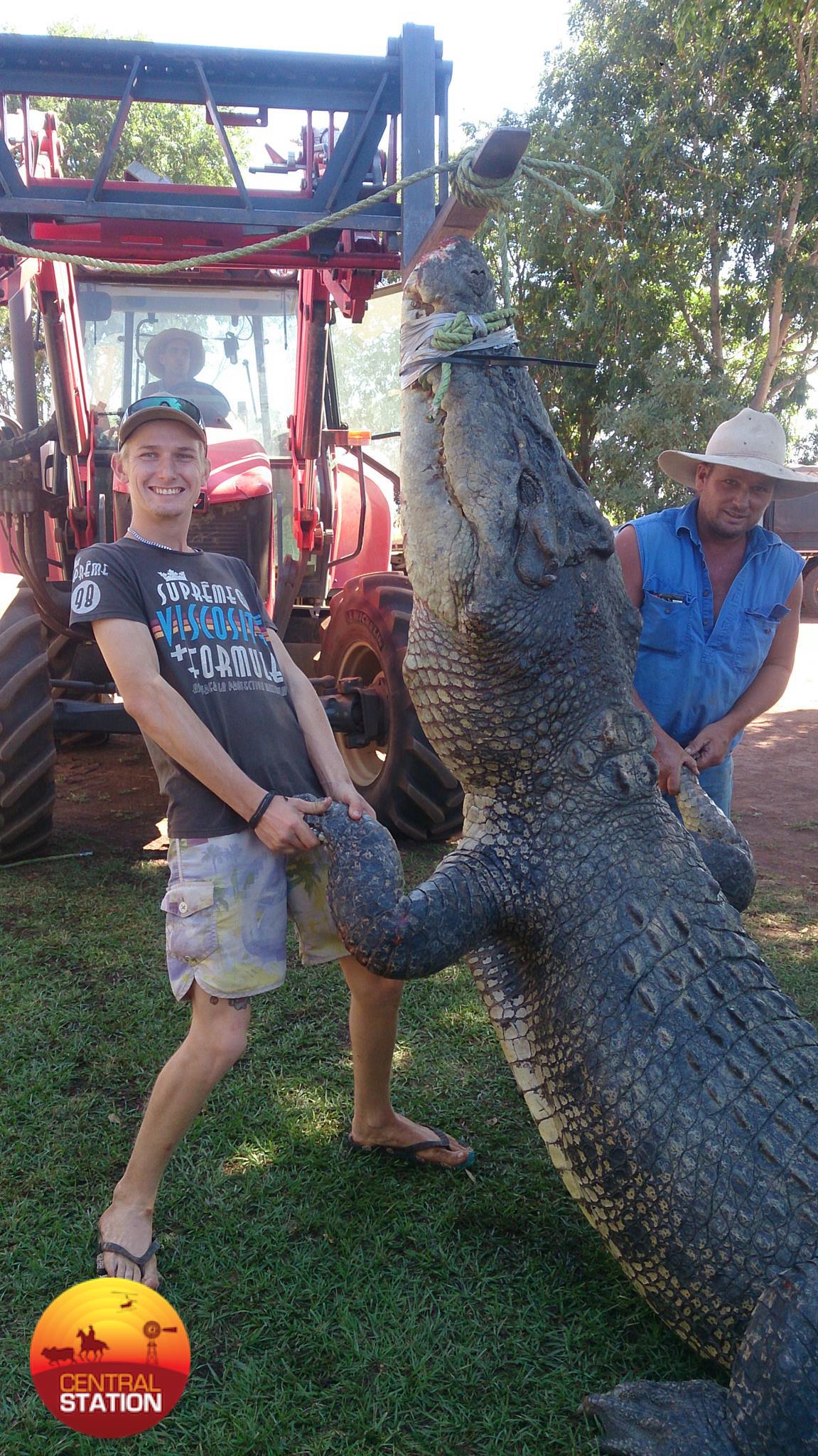Living with crocodiles
Host: Annaburoo Station
Written by Barb Phillips – Manager, Annaburoo Station.
Adrian and I will chalk up three years at Annaburroo in October. Boy has time flown. We absolutely love the floodplain which is so different from country we have worked before. Crocodile management is high on our priority list. We are a working cattle station sharing 35 kilometres of Mary River frontage with the greatest density of saltwater crocodiles of any river system in the world. We choose to coincide with these intriguing prehistoric reptiles. They are survivors and are very smart. They have not survived this long for no reason! Adrian and I had no prior experience working with crocodiles and so have been working closely with Parks and Wildlife and also Roger Matthews from Triple C Crocodile Contractors.
 Roger on the Annaburroo Billabong.
Roger on the Annaburroo Billabong.

Roger has been in the crocodile industry for 28 years. This includes eight years of farming – crocodile nesting, catching crocodiles for breeding programs, and partaking in the last freshwater crocodile muster on the Daly River in 1991 catching hatchlings for farms. Roger keeps freshwater crocodiles at home. His passion is live capture and he chooses to specialise in this. Catching crocodiles live provides Roger with another alternative. He has the option to supply female crocodiles to farms and larger male crocodiles to zoos.
The crocodile management program at Annaburroo is to relocate animals to waterways away from cattle paddocks. We have dug many new dams as watering points for animals and have consistently moved cattle supplement around paddocks according to grazing pressure and in doing so, have looked after the native and improved pasture. Our aim is to fence off the majority of the river and major creek systems so that crocodiles and livestock can co-exist. The problem we have, however, is that in a good wet season as we have now, there is water everywhere. The river is up, creeks have backed up, and the billabongs are full. When this occurs the water systems join to make a vast floodplain throughout which the crocodiles freely traverse and, of course, go under or over pretty much every fence. Only the red hill country and house paddocks are free from crocodiles. Of course, this is where we live and keep the horses, well out of harm’s way!
Towards the end of the wet in April, the water recedes and we commence a program of checking dams and removing crocodiles from them. Bait is left on the dam wall and checked regularly for any sign of interference or complete removal by a croc. Once a crocodile is identified a trap is placed on the dam wall and the wait commences. Once caught these crocs are relocated by Roger and his team. Some crocodiles that are all too aware of traps are harpooned from a boat.
Other areas of major concern are the deep holes in creeks where we pump water to supply water tanks that feed to troughs for cattle to drink. There have been a few instances where we have had to dispatch crocodiles due to them raising up on all four feet and hissing and growling at us, ready to attack. These crocodiles are usually over 3.5 metres and are extremely brazen. They present a great threat to us when working in the vicinity so if we cannot relocate them they are shot and removed from the area. It amazes me that there have not been more people taken by crocodiles, especially in this region. I have viewed many fishermen standing knee deep in water fishing, retrieving lures, boarding boats, and walking the banks. During the dry most crocodiles are out of the water in the undergrowth, catching some sun. If you happen to walk between them and the water you are easy picking for them to ambush and knock you into the water. Once in the water you would be very lucky to get out alive.

The other scenario is the pig hunter who often hunts the many creek systems across this region. If he hunts on Annaburroo he would be lucky to get out alive, regardless of the crocodile risk! But crocodiles are attracted to the smell of dogs – work dogs, dingoes, pig dogs, they will all attract crocodiles. If you are hunting in croc infested regions with dogs you are nothing short of caviar for the local crocodilian inhabitant. Beware!
